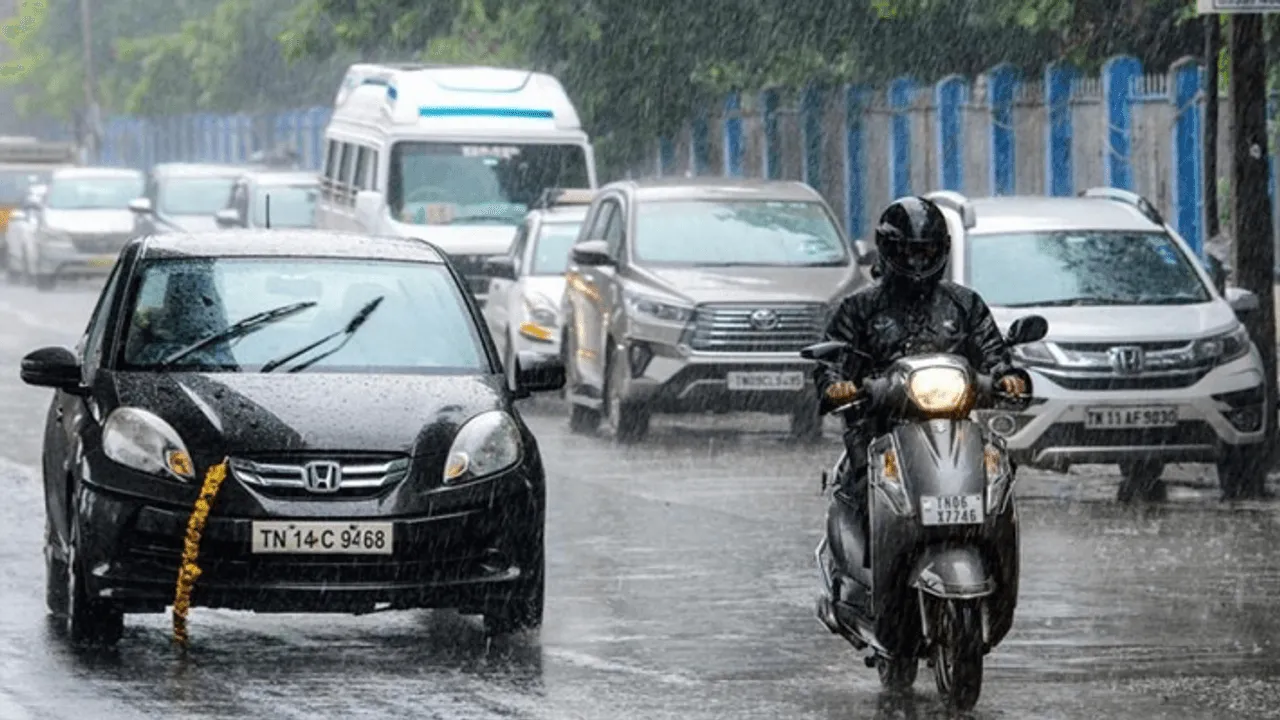Heavy Rain Alert for 12 Tamil Nadu Districts on Sep 10, 2025

Heavy Rain Alert Issued for 12 Tamil Nadu Districts on September 10, 2025
The India Meteorological Department (IMD) has issued an urgent weather alert forecasting heavy rainfall across 12 districts in Tamil Nadu on September 10, 2025. This breaking news update highlights the potential for significant weather disruptions due to a low-level atmospheric circulation prevailing over South India. Residents in affected areas, including Coimbatore, Nilgiris, Tiruvallur, Kanchipuram, Ranipet, Tiruvannamalai, Kallakurichi, Salem, Dharmapuri, Erode, Theni, and Dindigul, are advised to prepare for heavy showers, thunderstorms, and strong winds. This latest development underscores the need for vigilance as the state braces for challenging weather conditions.
The IMD’s Regional Meteorological Centre in Chennai has attributed the expected rainfall to a cyclonic circulation over the southwest Bay of Bengal and adjoining areas. Light to moderate rain is anticipated across many parts of Tamil Nadu, Puducherry, and Karaikal, with isolated heavy downpours in the specified districts. The alert also includes a warning for fishermen, advising against venturing into the southwest-central Arabian Sea, southwest Bay of Bengal, southern Tamil Nadu coast, Gulf of Mannar, and Kumari Sea areas due to cyclonic storms and rough sea conditions.

Districts on High Alert for Heavy Rainfall
The IMD has specifically highlighted 12 districts expected to experience heavy rainfall at one or two locations today. These include the hilly regions of Coimbatore and Nilgiris, as well as Tiruvallur, Kanchipuram, Ranipet, Tiruvannamalai, Kallakurichi, Salem, Dharmapuri, Erode, Theni, and Dindigul. The heavy rain warning is particularly significant for hilly areas, where the risk of landslides and flash floods is higher due to the terrain. Authorities have urged residents to stay indoors during intense rainfall and avoid low-lying areas prone to waterlogging.
The forecast indicates that thunderstorms accompanied by lightning and strong winds, with speeds ranging from 30 to 40 kmph, are likely to affect these districts. This could lead to disruptions such as power outages, traffic delays, and waterlogging in urban and rural areas. The Tamil Nadu State Disaster Management Authority (SDMA) has activated control rooms in vulnerable districts and deployed emergency response teams to mitigate potential risks. Residents are advised to monitor local weather updates and follow safety guidelines issued by the authorities.
Chennai and Suburbs: Moderate Rain Expected
In Chennai and its suburban areas, the IMD predicts partly cloudy skies with light to moderate rainfall accompanied by thunder and lightning in some parts of the city. The maximum temperature is expected to range between 35°C and 36°C, while the minimum temperature will likely hover around 28°C. High humidity levels, potentially reaching 70–85%, may make conditions feel warmer, adding to the discomfort for residents. The forecast suggests that rainfall in Chennai will be uneven, with some areas experiencing short, intense showers and others remaining relatively dry.
Urban areas in Chennai are particularly susceptible to waterlogging due to inadequate drainage systems, a recurring issue during the monsoon season. The Greater Chennai Corporation has been directed to clear stormwater drains and deploy pumps in low-lying areas to prevent flooding. Residents are encouraged to avoid unnecessary travel during peak rainfall hours and report waterlogging incidents to local authorities for swift action. The IMD’s timely alert aims to help Chennaiites prepare for the impending weather challenges.
Fishermen Advised to Avoid Sea Ventures
The IMD has issued a stern warning to fishermen along Tamil Nadu’s southern coast, advising them to refrain from venturing into the southwest-central Arabian Sea, southwest Bay of Bengal, Gulf of Mannar, and Kumari Sea areas on September 10, 2025. Cyclonic storms and rough sea conditions are expected in these regions, posing significant risks to fishing vessels. The advisory follows reports of a cyclonic circulation over the Bay of Bengal, which could intensify and lead to turbulent weather conditions along the coast.
Fishermen’s associations have been notified, and coastal communities are urged to secure boats and fishing equipment to prevent losses. The Tamil Nadu Fisheries Department has also deployed teams to monitor coastal areas and ensure compliance with the IMD’s advisory. This warning is particularly critical for the southern districts, where fishing is a primary livelihood for many communities. The IMD’s proactive measures aim to safeguard lives and minimize economic losses during this period of adverse weather.
Impact on Daily Life and Infrastructure
Heavy rainfall in Tamil Nadu has historically caused significant disruptions, including waterlogging, power outages, and traffic congestion. The 12 districts under the heavy rain alert are preparing for similar challenges, with local administrations mobilizing resources to address potential issues. In hilly areas like Coimbatore and Nilgiris, the risk of landslides is a major concern, prompting authorities to issue advisories for residents to avoid unnecessary travel and stay away from steep slopes and riverbanks.
Urban centers like Salem, Erode, and Tiruvannamalai are also at risk of waterlogging due to heavy showers. The SDMA has directed district collectors to ensure the availability of essential supplies, such as food, water, and medical aid, in case of disruptions. Schools and colleges in vulnerable areas may shift to online classes or declare holidays if the rainfall intensifies, as seen in previous heavy rain events in the state. The IMD’s forecast provides a critical window for authorities to implement preventive measures and minimize the impact on daily life.
Weather Patterns and Monsoon Context
The 2025 monsoon season in Tamil Nadu has been marked by erratic rainfall patterns, with coastal districts receiving above-normal precipitation while interior regions face deficits. The current heavy rain alert is driven by a low-level atmospheric circulation over the Bay of Bengal, a common trigger for intense rainfall in South India during the monsoon months. The IMD’s advanced weather models have enabled more accurate predictions, allowing authorities to issue timely warnings and prepare for potential impacts.
Tamil Nadu’s reservoirs, such as Mettur and Vaigai, have benefited from steady inflows due to recent rainfall, improving water availability for agriculture and drinking purposes. However, the uneven distribution of rain has raised concerns about water management in drier interior districts. The IMD’s forecast for September 10 indicates that the heavy rainfall will be concentrated in specific areas, with the intensity expected to subside over the next 48 hours. Scattered showers may continue across the state, keeping the weather humid and cloudy.
Safety Measures and Public Advisory
The Tamil Nadu government and the SDMA have outlined several safety measures to help residents navigate the heavy rainfall. These include avoiding travel during peak rainfall hours, staying indoors during thunderstorms, and reporting waterlogging or power outages to local authorities. Emergency helplines have been activated, and residents are encouraged to stay updated through official IMD bulletins and local news channels.
For farmers in the affected districts, the rainfall could be a boon for crops like paddy and maize, but excessive water may damage standing crops in low-lying areas. The Agriculture Department has advised farmers to protect their fields and monitor weather updates closely. Urban residents are urged to ensure proper drainage around homes and avoid wading through flooded streets, which could pose health and safety risks.
Comment / Reply From
No comments yet. Be the first to comment!











